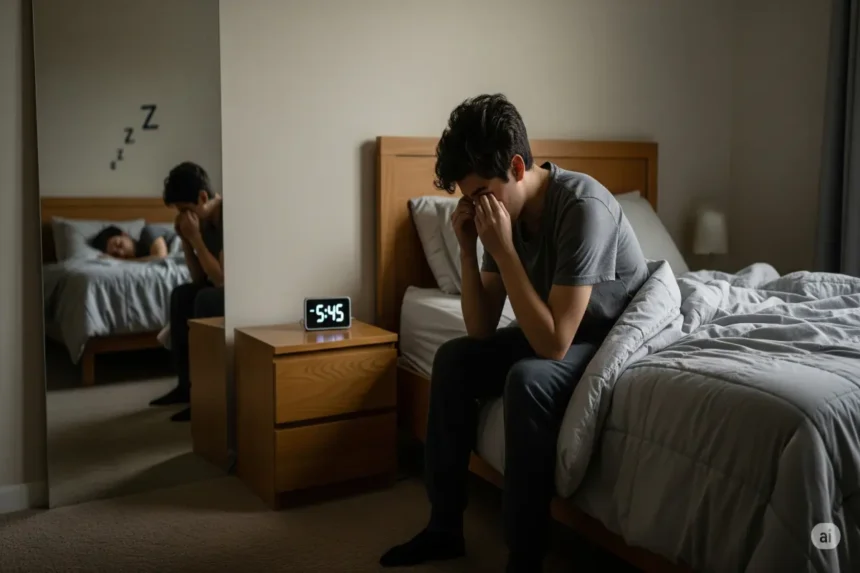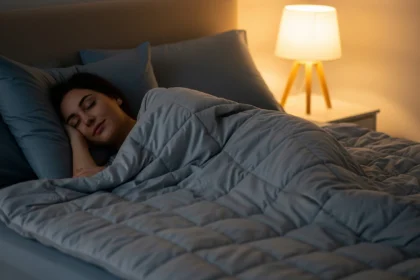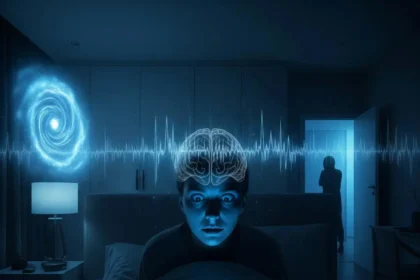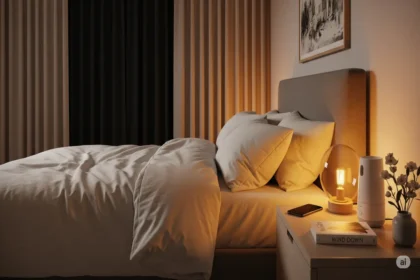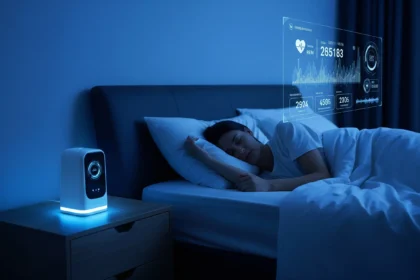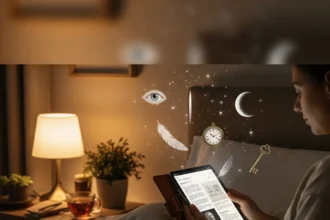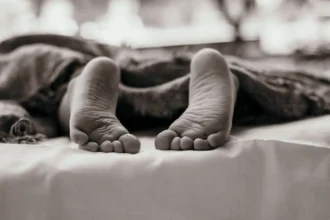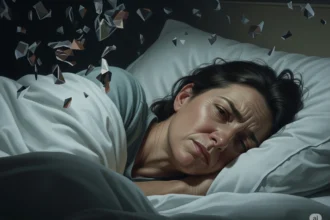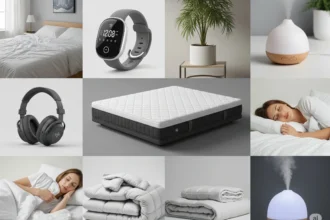The alarm blares, jolting us from a too-brief slumber. We hit snooze, perhaps multiple times, before dragging ourselves out of bed, already feeling the weight of the day before it has even begun. This pervasive sense of exhaustion, this constant craving for just a few more hours of rest, is not merely a personal failing; it’s a symptom of a widespread societal phenomenon known as the Sleep Gap. This refers to the growing chasm between the amount of sleep we need for optimal health and functioning, and the amount of sleep we actually get. It’s a silent epidemic, subtly eroding our well-being, diminishing our productivity, and leaving millions feeling perpetually tired, irritable, and less capable of navigating the demands of modern life.
Consider Maria, a marketing professional in her late thirties. Her days are a blur of meetings, deadlines, and managing a demanding team. Her evenings are filled with family responsibilities, a quick workout, and perhaps an hour of catching up on emails. By the time she finally collapses into bed, it’s often past midnight, and her alarm is set for 6 AM. She averages six hours of sleep, sometimes less. Maria feels constantly drained, her memory is fuzzy, and she finds herself snapping at her children more often than she’d like. She knows she needs more sleep, but where does she find the time? Maria’s struggle is not unique; it’s a mirror reflecting the reality for countless individuals trapped in the relentless cycle of the Sleep Gap.
The Widening Chasm: What’s Fueling the Sleep Gap?
The recommended sleep duration for most adults is between 7 and 9 hours per night. Yet, studies consistently show that a significant portion of the population falls short of this crucial benchmark. The Centers for Disease Control and Prevention (CDC) reports that over a third of American adults typically get less than the recommended amount of sleep. This gap isn’t accidental; it’s the product of a complex interplay of societal pressures, technological advancements, and individual choices.
The 24/7 Culture and Work Demands
One of the most significant drivers of the Sleep Gap is the relentless pace of modern life. The rise of the “always-on” culture, fueled by global connectivity and competitive work environments, means that work often spills over into evenings and weekends. For many, the workday doesn’t end when they leave the office; it continues with emails, calls, and the pressure to be constantly available. Shift work, a necessity for many industries, further disrupts natural sleep rhythms, forcing individuals to sleep at times when their bodies are biologically programmed to be awake. This constant pressure to produce, to be responsive, and to “do more” directly encroaches upon our sleep time.
The Digital Deluge: Screens in the Bedroom
The ubiquitous presence of screens in our lives is another major culprit. Smartphones, tablets, laptops, and televisions have become extensions of our waking hours, often accompanying us right into the bedroom. The blue light emitted by these devices suppresses the production of melatonin, the hormone that signals to our bodies that it’s time to sleep. Engaging with stimulating content – social media, news, video games, or streaming shows – right before bed also keeps the brain active and alert, making it harder to wind down and fall asleep. This nightly ritual of screen exposure pushes back bedtime, even as our bodies crave rest.
The Illusion of Productivity and Personal Time
For many, the late hours are the only time they feel they have for themselves. After work, childcare, chores, and other responsibilities, the quiet hours after 9 or 10 PM become a precious window for personal pursuits – reading, hobbies, or simply unwinding. This “revenge bedtime procrastination” is a phenomenon where individuals intentionally delay sleep to reclaim personal time, despite knowing the negative consequences for their sleep. It’s a poignant reflection of how squeezed our lives have become, forcing us to sacrifice one fundamental need for another.
Stress, Anxiety, and Underlying Conditions
Beyond external pressures, internal factors also contribute to the Sleep Gap. Chronic stress and anxiety, prevalent in modern society, can make it incredibly difficult to fall asleep and stay asleep. A racing mind, replaying the day’s events or worrying about tomorrow, is antithetical to restful slumber. Furthermore, undiagnosed or untreated sleep disorders, such as sleep apnea, restless legs syndrome, or insomnia, silently steal hours of restorative sleep, leaving individuals perpetually tired despite spending ample time in bed.
The Hidden Costs: Consequences of the Sleep Gap
The Sleep Gap isn’t just about feeling tired; its consequences are far-reaching, impacting every facet of our physical, mental, and emotional well-being, often without us fully realizing the root cause of our struggles.
Cognitive Decline and Impaired Performance
One of the most immediate impacts is on our brain. Chronic sleep deprivation impairs:
Imagine a surgeon operating on minimal sleep, or a pilot navigating complex weather conditions; the potential for catastrophic errors becomes alarmingly high.
Physical Health Risks: A Silent Erosion
The long-term health consequences of the Sleep Gap are profound and alarming:
Emotional Volatility and Relationship Strain
The Sleep Gap takes a heavy toll on our emotional landscape. We become more irritable, prone to mood swings, and less resilient to stress. This emotional volatility can strain personal relationships, leading to more arguments, reduced empathy, and a general decline in connection with loved ones. The patience and understanding required for healthy relationships often evaporate when we are chronically exhausted.
Bridging the Gap: Strategies for Restorative Sleep
Recognizing the problem is the first step; bridging the Sleep Gap requires a conscious, consistent effort to prioritize rest. It’s not about finding more hours in the day, but about optimizing the hours we have and creating an environment conducive to quality sleep.
1. Prioritize Sleep: Make it Non-Negotiable
Just as you schedule meetings or workouts, schedule your sleep. Determine your ideal bedtime by counting back 7-9 hours from your desired wake-up time. Stick to this schedule as consistently as possible, even on weekends. This helps regulate your circadian rhythm, your body’s internal clock, making it easier to fall asleep and wake up naturally. Think of sleep as a pillar of health, not a flexible luxury.
2. Create a Sleep Sanctuary: Optimize Your Environment
Your bedroom should be a haven for sleep, free from distractions.
3. Establish a Relaxing Bedtime Routine
Signal to your body that it’s time to wind down. This routine should begin 30-60 minutes before bed.
4. Mind Your Diet and Lifestyle
What you consume and how you live during the day significantly impact your sleep at night.
5. Address Underlying Sleep Disorders
If you consistently follow good sleep hygiene but still struggle with fatigue, it’s crucial to consult a healthcare professional. Conditions like sleep apnea (where breathing repeatedly stops and starts), chronic insomnia, or restless legs syndrome require medical diagnosis and treatment. A sleep specialist can help identify and manage these issues, which are often the hidden culprits behind persistent sleep deprivation.
Conclusion: Reclaiming Rest, Reclaiming Life
The Sleep Gap is a modern challenge, but it’s one we have the power to overcome. It demands a shift in perspective – from viewing sleep as a luxury we can cut short, to recognizing it as a fundamental pillar of our health, productivity, and happiness. Bridging this gap isn’t just about feeling less tired; it’s about unlocking our full cognitive potential, strengthening our immune systems, protecting our long-term health, and fostering more patient, joyful, and connected relationships.
The journey to better sleep begins with awareness and a commitment to change. It might require difficult choices – saying no to an extra hour of work, putting down the phone, or prioritizing rest over another late-night activity. But the rewards are immeasurable: a sharper mind, a healthier body, a more resilient spirit, and a life lived with greater energy and purpose. It’s time to stop merely surviving the Sleep Gap and start actively bridging it, one restorative night at a time.
Disclaimer: The information provided in this article is for general informational purposes only and does not constitute medical advice. It is not a substitute for professional medical advice, diagnosis, or treatment. Always seek the advice of your physician or other qualified health provider with any questions you may have regarding a medical condition. Never disregard professional medical advice or delay in seeking it because of something you have read on this website.

